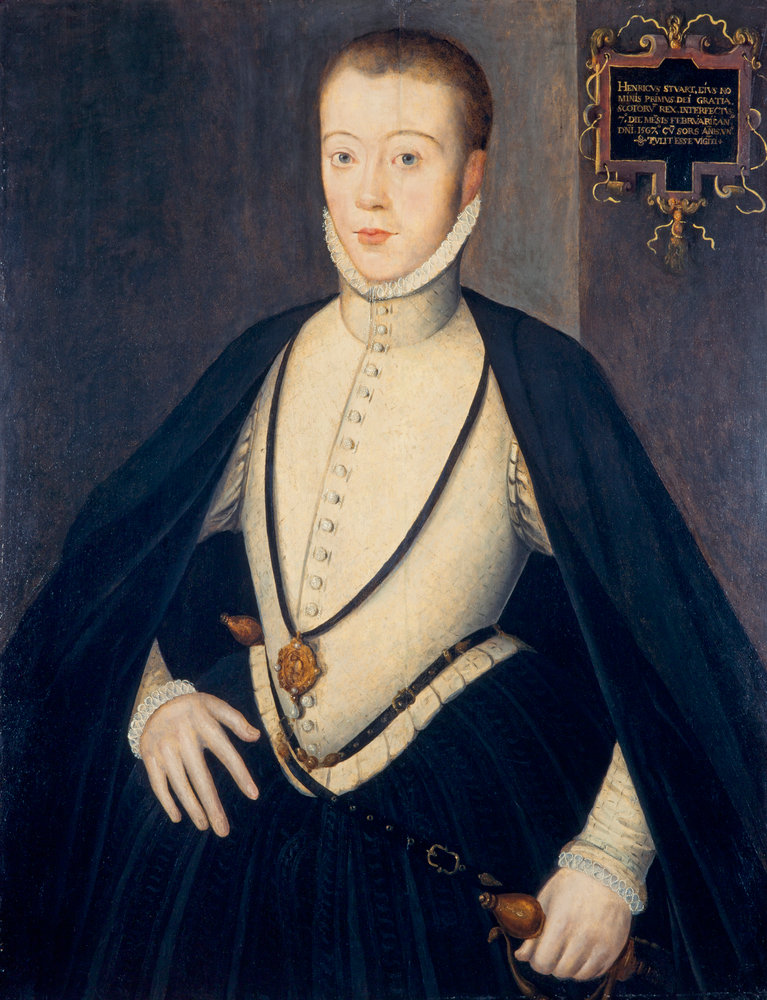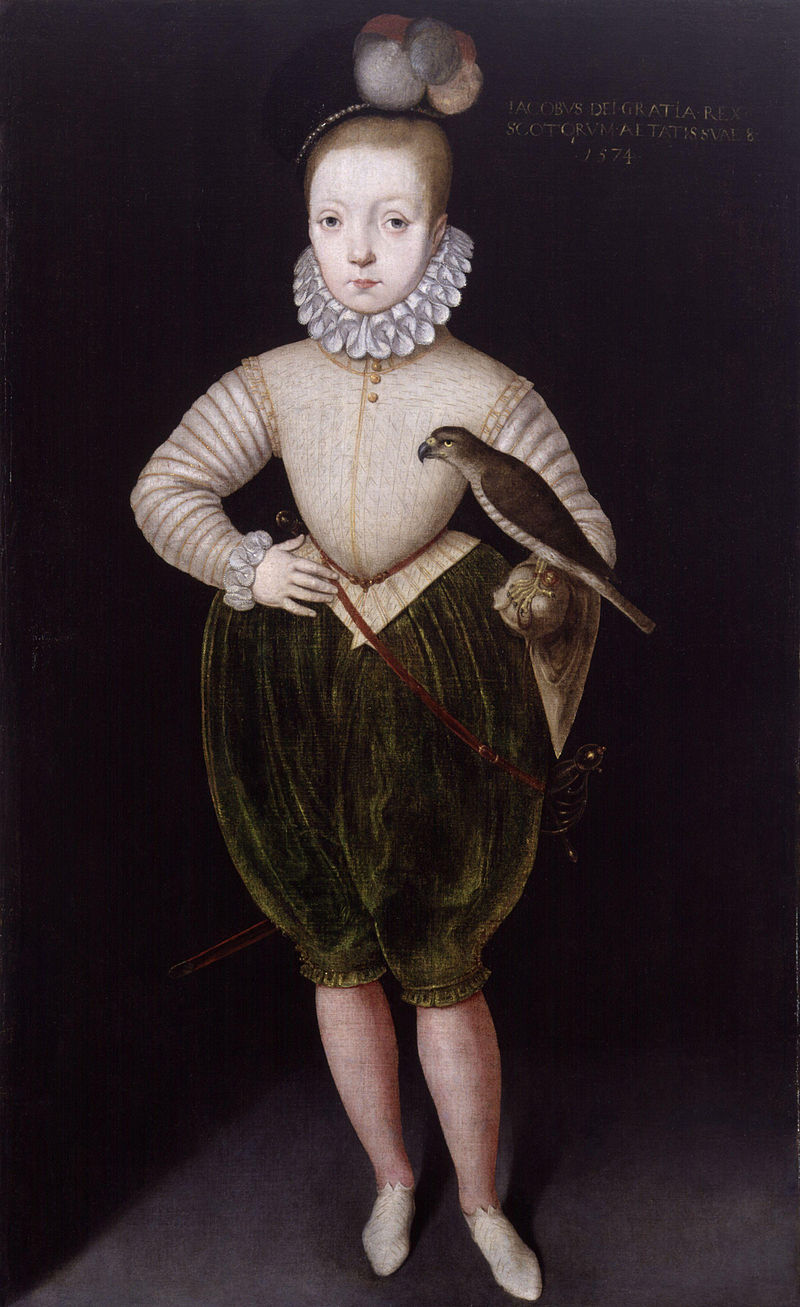by Susan Flantzer © Unofficial Royalty 2017

Credit – Wikipedia
The eldest surviving child of Matthew Stewart, 4th Earl of Lennox and Lady Margaret Douglas, Henry Stuart, Lord Darnley, the second husband of Mary, Queen of Scots, was born on December 7, 1545, at Temple Newsam in Leeds, West Yorkshire, England. Temple Newsam, a Tudor country house, was built between 1500 and 1520. In 1537 Thomas, Lord Darcy was executed for the part he played in the Pilgrimage of Grace, and the property was confiscated by the Crown. In 1544, King Henry VIII gave it to his niece Lady Margaret Douglas and her husband Matthew Stuart, 4th Earl of Lennox.
Henry Stuart, Lord Darnley is generally known as Lord Darnley (or Darnley), his courtesy title as the heir apparent to the Earldom of Lennox. Darnley had one brother who died in infancy and one surviving brother:
- Henry Stuart (born and died 1545)
- Charles Stuart, 1st Earl of Lennox (1555 – 1576), married Elizabeth Cavendish, daughter of Bess of Hardwick and Sir William Cavendish, had one child, Lady Arabella Stuart
Darnley’s mother Lady Margaret Douglas was the only child of Margaret Tudor (daughter of King Henry VII of England and the older sister of King Henry VIII of England) and her second husband Archibald Douglas, 6th Earl of Angus. Margaret Tudor was first married to James IV, King of Scots and they were the parents of James V, King of Scots, and the grandparents of Mary, Queen of Scots. Margaret Tudor’s third marriage to Henry Stewart, 1st Lord Methven was childless.
Henry Stuart, Lord Darnley was brought up in England. His mother had left Scotland in 1528 and had been brought up at the English court with her first cousin, the future Queen Mary I of England, who remained her lifelong friend. Darnley’s father lived in exile in England. He had been declared guilty of treason in Scotland for his part in the war of the Rough Wooing, siding with the English. Darnley had claims to both the Scottish and English thrones as he was descended from both James II of Scotland and Henry VII of England. Darnley’s family was Catholic and represented an alternative succession to the English throne. He had been well-educated and was very conscious of his status and heritage.

Darnley in 1555; Credit – Wikipedia
14-year-old Darnley was sent to the French court to complete his education. This coincided with the short reign of François II, King of France, the first husband of Mary, Queen of Scots, Darnley’s first cousin. Upon the death of François II in 1560, Darnley was at once proposed as a suitable husband for the 18-year-old widowed Queen of Scots. Mary, Queen of Scots had lived in France since she was five years old. During Mary’s thirteen-year absence, the Protestant Reformation had swept through Scotland, led by John Knox who is considered the founder of the Presbyterian Church of Scotland. Therefore, Catholic Mary returned to a Scotland which was very different from the one she had left as a child.
Mary needed an heir, so a second marriage became necessary. After considering Carlos, Prince of Asturias, known as Don Carlos, eldest son and heir of King Philip II of Spain and Queen Elizabeth I’s candidate Robert Dudley, 1st Earl of Leicester, Mary became infatuated with her first cousin Henry Stuart, Lord Darnley. Both Mary and Darnley were grandchildren of Margaret Tudor. The couple married at Holyrood Palace in Edinburgh, Scotland on July 29, 1565.

Henry Stuart, Lord Darnley and Mary, Queen of Scots; Credit – Wikipedia
The marriage angered Queen Elizabeth I who felt that Darnley, as her cousin and an English subject, needed her permission to marry. James Stewart, 1st Earl of Moray, the illegitimate son of James V, King of Scots and Mary’s half-brother, was also angered by his sister’s marriage to a prominent Catholic and joined other Protestant lords in a rebellion. Mary soon became disillusioned by Darnley’s uncouth behavior and his insistence upon receiving the Crown Matrimonial which would have made him co-sovereign of Scotland. Mary refused and their relationship became strained.
At the end of 1565, Mary became pregnant. Darnley, who was jealous of Mary’s friendship with her private secretary David Riccio, rumored to be the father of her child. Darnley formed a conspiracy to do away with Riccio. On March 9, 1566, Riccio was at supper with Mary and her ladies at Holyrood Palace. The conspirators, led by Darnley, burst into the room, dragged Riccio away, and killed him in an adjoining room. Mary was roughly pushed and shoved and although the conspirators hoped she would miscarry, she did not. All the conspirators were banished except for Darnley who was forgiven. On June 19, 1566, at Edinburgh Castle, Mary gave birth to a son, christened Charles James after his godfather King Charles IX of France, later succeeding his mother as King James VI of Scotland. In 1603, Mary and Darnley’s son succeeded the childless Queen Elizabeth I of England as King James I of England.

James VI, King of Scots, circa 1574; Credit – Wikipedia
Mary’s marriage was all but over and she began to be drawn to James Hepburn, 4th Earl of Bothwell. Bothwell entered into a conspiracy with Archibald Campbell, 5th Earl of Argyll and George Gordon, 5th Earl of Huntly to rid Mary of her husband. On February 10, 1567, Kirk o’ Field, the house where Darnley was staying, was blown up. Darnley and his servant were found dead near the house in an orchard outside the city walls. Since Darnley was dressed only in his nightshirt and had no injuries, it was assumed that he was strangled after the explosion. Suspicions that Mary colluded with the conspirators in Darnley’s death or that she took no action to prevent his death were key factors that led to her loss of the Scottish crown that same year. Darnley was buried at Holyrood Abbey in Edinburgh, Scotland.

Matthew Stewart, his wife Margaret, their son Charles and grandson James VI of Scotland mourning Henry Stuart, Lord Darnley; Credit – Wikipedia
This article is the intellectual property of Unofficial Royalty and is NOT TO BE COPIED, EDITED, OR POSTED IN ANY FORM ON ANOTHER WEBSITE under any circumstances. It is permissible to use a link that directs to Unofficial Royalty.
Works Cited
- Ashley, M. and Lock, J. (2012). The mammoth book of British kings & queens. London: Constable & Robinson.
- En.wikipedia.org. (2017). Henry Stuart, Lord Darnley. [online] Available at: https://en.wikipedia.org/wiki/Henry_Stuart,_Lord_Darnley [Accessed 20 Jul. 2017].
- En.wikipedia.org. (2017). Margaret Douglas. [online] Available at: https://en.wikipedia.org/wiki/Margaret_Douglas [Accessed 20 Jul. 2017].
- En.wikipedia.org. (2017). Matthew Stewart, 4th Earl of Lennox. [online] Available at: https://en.wikipedia.org/wiki/Matthew_Stewart,_4th_Earl_of_Lennox [Accessed 20 Jul. 2017].
- Unofficial Royalty. (2017). Mary, Queen of Scots. [online] Available at: https://www.unofficialroyalty.com/mary-queen-of-scots/ [Accessed 20 Jul. 2017].
- Williamson, D. (1996). Brewer’s British Royalty. London: Cassell.
